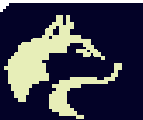Team:Washington/Gram Negative/Design
From 2010.igem.org
| Line 25: | Line 25: | ||
</html> | </html> | ||
<!---------------------------------------PAGE CONTENT GOES BELOW THIS----------------------------------------> | <!---------------------------------------PAGE CONTENT GOES BELOW THIS----------------------------------------> | ||
| + | =Using Type VI Secretion as an Antibacterial Agent== | ||
| + | The T6SS we want to use has several difficulties in its current form. First, it is found in ''P. aeruginosa'' which can be pathogenic, as well as not being an enteric bacteria. As our model is anti-enteric, the native system would be unfeasible. | ||
| - | In order to create a probiotic application for this system, we first attempt to express it heterologously in ''E. Coli''. Starting from a Fosmid containing our T6SS, we are using Recombineering as described by Warming et al (2005) to replace the strict native regulation with robust T7 promoters to create strong expression of the T6SS. | + | Secondly, T6SS is highly regulated at both the transcriptional and post-transcriptional level. We want our toxin delivery system to be expressed in either a constitutive or easily inducible manner. |
| + | |||
| + | ==Heterologous Expression of T6SS== | ||
| + | |||
| + | In order to create a probiotic application for this system, we first attempt to express it heterologously in non-pathogenic ''E. Coli''. Starting from a Fosmid containing our T6SS, we are using Recombineering as described by Warming et al (2005) to replace the strict native regulation with robust T7 promoters to create strong expression of the T6SS. | ||
| + | |||
| + | All the essential genes for our T6SS are contained within two putative operons, encoded in opposite directions. The native promoters for both operons are found in the same intergenic region, between ''fha1'' and ''tssA1''. Therefore, we can easily replace the promoter regions for both operons in one step. | ||
| + | |||
| + | [[Image:Washington T6SS.jpg|200px|thumb|left|The Essential T6SS]] | ||
| + | |||
| + | |||
| + | ==Toxin/Antitoxin Inducible Circuit== | ||
At the same time, we are creating inducible circuits to allow for production and regulation for the antibacterial toxin and antitoxin system, allowing us to create "assassin cells" upon induction. | At the same time, we are creating inducible circuits to allow for production and regulation for the antibacterial toxin and antitoxin system, allowing us to create "assassin cells" upon induction. | ||
| + | |||
<!---------------------------------------PAGE CONTENT GOES ABOVE THIS----------------------------------------> | <!---------------------------------------PAGE CONTENT GOES ABOVE THIS----------------------------------------> | ||
Revision as of 19:44, 13 September 2010
Using Type VI Secretion as an Antibacterial Agent=
The T6SS we want to use has several difficulties in its current form. First, it is found in P. aeruginosa which can be pathogenic, as well as not being an enteric bacteria. As our model is anti-enteric, the native system would be unfeasible.
Secondly, T6SS is highly regulated at both the transcriptional and post-transcriptional level. We want our toxin delivery system to be expressed in either a constitutive or easily inducible manner.
Heterologous Expression of T6SS
In order to create a probiotic application for this system, we first attempt to express it heterologously in non-pathogenic E. Coli. Starting from a Fosmid containing our T6SS, we are using Recombineering as described by Warming et al (2005) to replace the strict native regulation with robust T7 promoters to create strong expression of the T6SS.
All the essential genes for our T6SS are contained within two putative operons, encoded in opposite directions. The native promoters for both operons are found in the same intergenic region, between fha1 and tssA1. Therefore, we can easily replace the promoter regions for both operons in one step.
Toxin/Antitoxin Inducible Circuit
At the same time, we are creating inducible circuits to allow for production and regulation for the antibacterial toxin and antitoxin system, allowing us to create "assassin cells" upon induction.
 "
"

